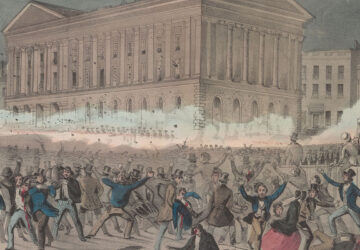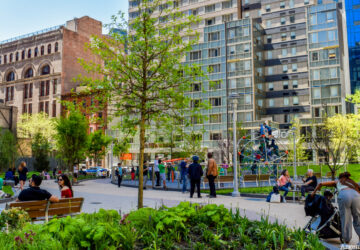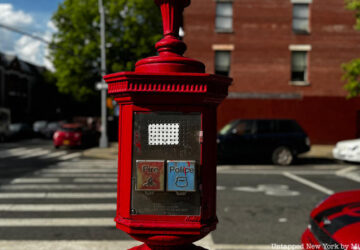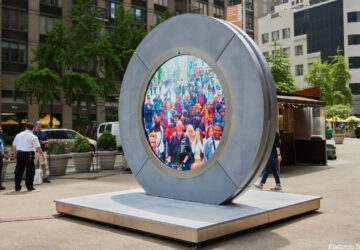2. Weehawken Street used to house a prison and the home of Theodore Roosevelt’s father
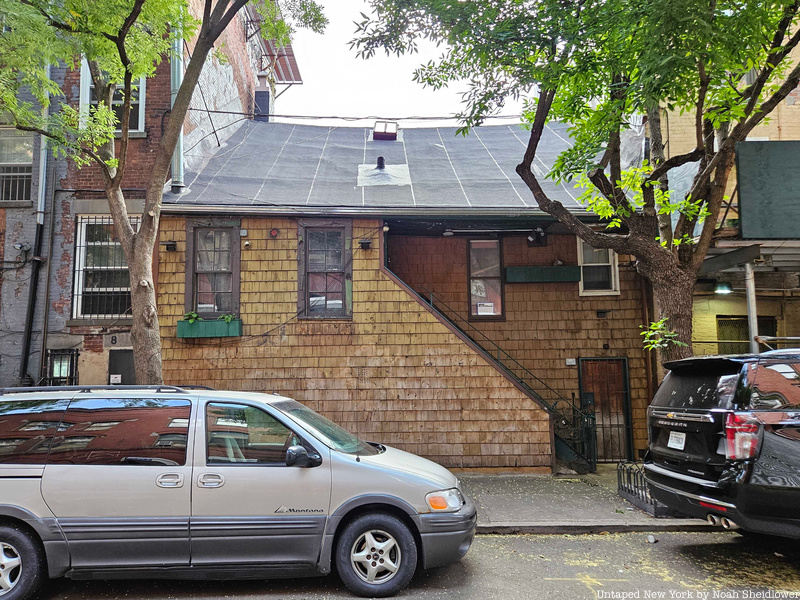
Weehawken Street is one of the quieter streets of the West Village with some properties that date back nearly 200 years ago. The one-block street takes its name from the ferry landing that connected the area to Weehawken, New Jersey, across the Hudson River. The land around what would become Weehawken Street was Newgate State Prison, opened in the late 1790s. The prison was actually somewhat of a tourist attraction due to its high stone walls, though its poor conditions led it to close in favor of Sing Sing Prison further upstate. Nearly four decades later, after the prison closed, a produce market was built on Weehawken Street, ultimately becoming the short-lived Greenwich Market that closed a decade later.
As the decades progressed, the buildings served as everything from stables to boarding houses to saloons. However, 6 Weehawken Street dates back to the original wooden Market House from the 1830s. All buildings on Weehawken Street are now part of a historic district of 14 buildings that trace their history back to maritime industrialization. 7 Weehawken Street is another historic property in the district, built for carpenter Jacob P. Roome and later purchased by Cornelius Van Schaack Roosevelt, the father of Theodore Roosevelt.
